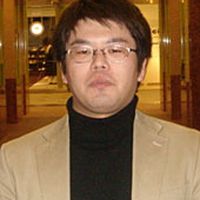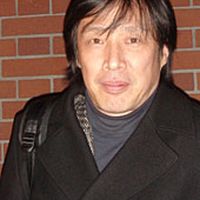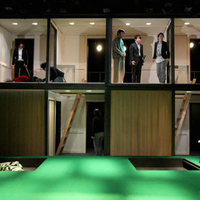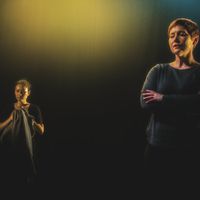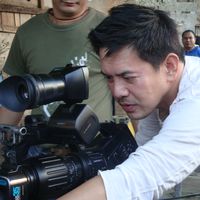UK: performing arts operator reflects
 [caption id="attachment_2829" align="alignright" width="170" caption="Alison Andrews, UK"]
[caption id="attachment_2829" align="alignright" width="170" caption="Alison Andrews, UK"]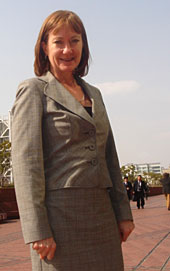 [/caption]
[/caption]Contributed by Ive Stevenheydens
'I see mostly new versions of old forms' - Alison Andrews, U.K.
"Defining where yesterday ends, contemporary is and tomorrow begins is a highly enjoyable exercise but an impossible act," states Alison Andrews, Performing Arts Officer in the Yorkshire region for the Arts Council England. "There is one sense I get about contemporary performance practice in England and it is a bit negative in a way. We have an obsession with the idea of innovation, with the 'new' if you like. We use these terms quite glibly. We could say that everything we are doing is built on tradition: on practice we can trace back to particular dates. Possibly in dance, audiences, critics, choreographers and dancers are a lot more in touch with tradition and with the work of their predecessors. There is a sense of continuity, of understanding where they come from – possibly because of the discipline is more rigorous, it is really about technique. Trying to define what is contemporary theatre is even more difficult. Are we talking about text-based work, so called 'physical' theatre or fusions with a whole range of other things? In a sense, the bodily discipline required of performers and by directors in theatre in the U.K. is much less than in dance, so there is possibly less context for the appearance of continuity. People might disagree with this, which is absolutely fine. I hear the claim that a company or artist is creating a 'new' performance language quite regularly – I don't see that claim confirmed very often. Mostly I see new versions of old forms. Of course when you do come across something really fresh and vital it stands out – you can see it straight away."
"Andrews sees also a difficulty in reading (contemporary) works from other cultures. "If you take for instance a Japanese artist who does something radical and 'new' for a Japanese audience, will it appear in the same way for a Western audience? I just don't know. My instinct says that it will not necessarily appear as new and unusual to a Western public unless it can be contextualised – and that means taking into account the social and political situation in the country.
Clumsiness while measuring
In the West we are so much more experienced with transgression of the rules in theatre. We constructed a culture of comment, of transgression, of criticism. Speaking about 'contemporary' seems to imply a critical position with things that came before. It became inherent in the concept of contemporary artistic practice. So how can western audiences contextualise and understand artworks from other parts of the world? Andrews: "There is a danger in flattening things out, if we try to pin down what contemporary means. I think there is no such thing that can be universally translated for audiences wherever they are. Furthermore, I think it is extremely dangerous to push the Western kind of thinking, to handle our standards while looking at other cultures. A scientist would understand that the very process of examining something could possibly change the nature of the subject. This idea is borrowed from Heisenberg's uncertainty principle which acknowledges the inherent clumsiness in the act of measurement. In that sense it is impossible to have a pure observation of something. In the arts, we don't have these disciplined scientifically approaches, so there is a danger of mixing up our personal views and backgrounds while analyzing or criticizing things. This process is very much like a spiral."
The idea of 'contemporary has also different connotations in different cultures and societies. Andrews: "When I was in China, I learned that the word 'modern' has in that country a lot of political connotations. This relationship between 'modern' art and the celebration of national values does not exist in the U.K., Europe or the west. Similarly the word 'contemporary' does not mean liberal, expressive, radical, and so on – terms that we find over here rather important when considering contemporary artistic practice. The words are weighed down by history and local situations in both East and West. Understanding this is a long process, and you cannot escape from the fact that you are analyzing things through your western eyes, including a certain understanding and experience of what 'freedom' means."
Panic about knowledge
In that respect, Andrews also points out the role of censorship: "In the UK, we had formal censorship up till 1968, when the Lord Chamberlain's office was charged with approving play scripts for public performance. Contemporary performance practice that often developed without text, presented a challenge not only to traditional form but also to this process. With the end of the licensing laws, we are still subject to common law provisions in the arts and particular with regard to incitement to racial hatred. Artists have found ingenious ways of bypassing censorship in the West and of course contemporary performing arts are essentially concerned with challenging accepted norms. There is also the idea of Self censorship, which may be an issue for artists in both East and West."
Andrews works a lot with artists who explore interdisciplinary practice, including science and art collaborations. What about technology in this context? "As I said, we are loosely using the word new, while speaking about technology. What is that exactly? We should be very careful while talking about innovation and newness in relation to technology. Recent developments – digital media, the Internet, film, video, and so on – can help to distribute the work in a different way, so access broadens, but do these developments really generate new forms? After all, writing is a technology which is concerned with replication and distribution; it's been around for millennia – what is really so different about the Internet? It means you can be faster, but what affect does it have on the artist's thought? You can clearly see how this works in visual media – but how does new technology relate to performing arts, to bodies in space? It's just a question."
The Arts Council has been extensively involved in supporting, collaborative inquiry between artists and the scientists. This is not art that is about science or science that borrows from art to present its findings. Actually these collaborations between artists and scientists are very exciting, and perhaps a return to a path that has been left in the Renaissance, when the equal engagement with aesthetics, religion, mathematics, science and painting was normal – it was possible to know everything. Now we have the sense that the more we know the less we can know. I feel there is some kind of a panic about knowledge. Maybe the main challenge is to slow this down, to engage with practitioners from other areas, to explore where there is common cause and where there is complementary philosophical ground. We mounted an international conference in 'Rules of Engagement' at York University which drew interdisciplinary practitioners from around the world. The UK based, internationally operating organisation Arts
Catalyst have been doing groundbreaking work on this field, and one of the practitioners they work closely with, Brandon Ballengée, an American, is for instance a good example of being both artist and scientist. Of course this terrain raises ethical and moral issues – the discussion becomes one where the social place and social affect of the contemporary arts cannot be avoided – science has been dealing with moral questions about its own practice for decades, particularly around climate change and genetics – the decisions scientists make can affect us dramatically – how can contemporary performing arts respond to these issues – a question for artists in both the East and the West."
There are many visions of 'the contemporary' in our region' -
In 1999, Amna Kusumo and three cultural activists founded Kelola, a national non-profit organisation that promotes the vitality of Indonesian arts.
Read more: Indonesia: performing arts operator reflects
'To face and cherish our differences and similarities'
Kentaro Matsui is a theatre critic and also Programme Director of the Tokyo based Setagaya Public Theatre, a non-profit structure funded by the City of Setagaya Council
Read more: Japanese theatre critic reflects
'We are interrelated through history'
"I like to interpret the word 'contemporary' literally: a moment in time," says Daisuke Muto, Tokyo based dance critic and teacher at the Gamma Prefectural Women's University, Japan.
Read more: Japan: dance critic reflects
Back to main article:

